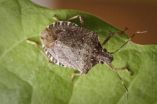(Press-News.org) Activation of beta-catenin, the primary mediator of the ubiquitous Wnt signaling pathway, alters the immune system in lasting and harmful ways, a team of Chicago-based researchers demonstrate in the February 26, 2014, issue of Science Translational Medicine.
An increase in beta-catenin in certain types of T cells—a class of white blood cells—causes chronic inflammation in the intestine and colon, eventually leading to cancer. The same mechanism is used by colon cancer to propagate itself. The researchers combine data from patients suffering from colitis or colon cancer with studies in mouse models of the disease to unravel the mechanism of this transition.
"We initially focused on this process in mouse models of hereditary colon cancer (polyposis), but the breakthrough came when we went to see patients," said the study's principal investigator, Fotini Gounari, PhD, associate professor of medicine at the Gwen Knapp Center for Lupus and Immunology Research at the University of Chicago. "Biopsied tissues from colitis patients contained T cells with high levels of beta-catenin. When we examined blood from colon-cancer patients, we found the same pathway activated in both conventional T cells and regulatory T cells."
Previous work by the team showed that a subset of protective T cells known as regulatory T cells, or Tregs—which normally stifle inflammation—switches functions in colon cancer patients to promote inflammation and enhance tumor growth.
The current study points to beta-catenin as the primary culprit. The researchers found mounting levels of this protein in T cells from patients with long-lasting ulcerative colitis and colon cancer. When Gounari and colleagues genetically engineered mice so that their T cells expressed high levels of beta-catenin, those mice were highly susceptible to colon cancer.
The finding "was a revelation," Gounari said. Activation of this signaling pathway appears to be an initiating event for colon cancer, which is then fed by uncontrolled inflammation in the tumor environment.
Normally, inflammation in the gut is elevated through the action of T-helper 17 (TH17) cells and suppressed by Tregs. This balance is important for keeping microbes in the gut at bay and for stimulating growth of cells during tissue repair. However, in colon cancer, a distinct set of regulatory T cells that have pro-inflammatory properties, expands rapidly and upsets the balance.
"We now have evidence that beta-catenin is a key molecule for expansion of both TH17 cells and pro-inflammatory Tregs," Gounari said.
With their unique mouse models, Gounari and colleagues were able to tease apart some of the mechanisms that generated pro-inflammatory T cells. They found that beta-catenin signaling initiated a cascade of events in both conventional T cells and Tregs that altered the chromatin organization and the type of genes expressed by T cells. These changes activate a protein called RORγT that was previously known to direct the differentiation of TH17 cells.
"It's like a tsunami," said collaborating partner, Khashayarsha Khazaie, PhD, professor of immunology at the Mayo Clinic. "If you make both your conventional T cells and Tregs pro-inflammatory, then you've done it. You've lost control in a bad way."
Understanding the process will provide ways to intervene in many diseases, the authors suggest.
"We want to disrupt the signals," Gounari said. "There are inhibitors under development that block RORγt or selectively interrupt the Wnt pathway in T cells. If you could block the pathway enough to tip the balance back to normal, that could potentially stop inflammatory bowel diseases and help control colon cancer."
"Activation of beta-catenin in T cells is unlikely to be restricted to these diseases, and is likely to happen in other autoimmune diseases and cancers, so there may be broad prospects for therapy of a range of chronic and often lethal diseases," she adds.
There is still work to be done, the researchers emphasize. They hope to learn more about how beta-catenin produces chromatin changes that disturb normal immune function, how this system interacts with the microbiome, and to determine the best targets for therapy.
But they have taken an important step. "Elucidating the molecular mechanisms that shift the lymphocyte balance from anti-inflammatory to proinflammatory," they wrote, "is expected to improve diagnosis and treatment of autoimmune diseases and cancer."
INFORMATION:
The paper, "β-Catenin Promotes Colitis and Colon Cancer through Imprinting of Pro-Inflammatory Properties in T Cells," will be published online on 26 February. Funding for this study was provided by the National Institutes of Health, the American Cancer Society, and the Circle of Service award from the Lurie Comprehensive Cancer Center.
Additional authors include co-first authors Shilpa Keerthivasan and Katayoun Aghajani, as well as Marei Dose, Luciana Molinero, Christopher Weber, Akinola Olumide Emmanuel and Tianjao Sun of the University of Chicago; Mohammad W. Khan, Vysak Venkateswaran, David J. Bentrem, Mary Mulcahy, Nichole Blatner and Elena M. Ramos of Northwestern University; and Ali Keshavarzian of Rush University Medical Center.
Beta-catenin alters T cells in lasting and harmful ways
Study helps explain chronic inflammation in autoimmunity and cancer
2014-02-26
ELSE PRESS RELEASES FROM THIS DATE:
Hubble monitors supernova in nearby galaxy M82
2014-02-26
This is a Hubble Space Telescope composite image of a supernova explosion designated SN 2014J in the galaxy M82. At a distance of approximately 11.5 million light-years from Earth it is the closest supernova of its type discovered in the past few decades. The explosion is categorized as a Type Ia supernova, which is theorized to be triggered in binary systems consisting of a white dwarf and another star — which could be a second white dwarf, a star like our sun, or a giant star.
Astronomers using a ground-based telescope discovered the explosion on January 21, 2014. This ...
Characterization of stink bug saliva proteins opens door to controlling pests
2014-02-26
Brown marmorated stink bugs cause millions of dollars in crop losses across the United States because of the damage their saliva does to plant tissues. Researchers at Penn State have developed methods to extract the insect saliva and identify the major protein components, which could lead to new pest control approaches.
"Until now, essentially nothing was known about the composition of stink bug saliva, which is surprising given the importance of these insects as pests and the fact that their saliva is the primary cause of feeding injury to plants and crop losses," said ...
New data book outlines Hispanic/Latino health
2014-02-26
The National Heart, Lung, and Blood Institute, part of the National Institutes of Health, released the largest and most comprehensive health and lifestyle analysis of people from a range of Hispanic/Latino origins. The data will enable individuals, communities, and policy makers to tailor better health intervention strategies.
"This study lays the foundation for future research on the possible causes of chronic diseases and ways to prevent them, and to help us understand the reasons why Hispanics and Latinos live longer than the general population," said Gregory Talavera, ...
Research maze puts images on floor, where rodents look
2014-02-26
PROVIDENCE, R.I. [Brown University] — A rodent in a maze is a staple — even a stereotype — of experimental psychology research. But the maze in the lab of Rebecca Burwell, professor of cognitive, linguistic, and psychological sciences at Brown University, is not your grandfather's apparatus. In a new video article published in the Journal of Visualized Experiments, Burwell's research group demonstrates in full detail how the maze can be used to perform automated visual cognitive research tasks with great efficiency.
The article is available here: http://www.jove.com/video/51316/automated-visual-cognitive-tasks-for-recording-neural-activity-using
The ...
Mayo Clinic discovers African-Americans respond better to rubella vaccine
2014-02-26
ROCHESTER, Minn. — Feb. 26, 2014 — Somali Americans develop twice the antibody response to rubella from the current vaccine compared to Caucasians in a new Mayo Clinic study on individualized aspects of immune response. A non-Somali, African-American cohort ranked next in immune response, still significantly higher than Caucasians, and Hispanic Americans in the study were least responsive to the vaccine. The findings appear in the journal Vaccine.
"This is fascinating," says Gregory Poland, M.D., Mayo Clinic vaccinologist and senior author of the study. "We don't know ...
JILA physicists discover 'quantum droplet' in semiconductor
2014-02-26
BOULDER, Colo -- JILA physicists used an ultrafast laser and help from German theorists to discover a new semiconductor quasiparticle—a handful of smaller particles that briefly condense into a liquid-like droplet.
Quasiparticles are composites of smaller particles that can be created inside solid materials and act together in a predictable way. A simple example is the exciton, a pairing, due to electrostatic forces, of an electron and a so-called "hole," a place in the material's energy structure where an electron could be, but isn't.
The new quasiparticle, described ...
Pine forest particles appear out of thin air, influence climate
2014-02-26
Pine forests are especially magical places for atmospheric chemists. Coniferous trees give off pine-scented vapors that form particles, very quickly and seemingly out of nowhere.
New research by German, Finnish and U.S. scientists elucidates the process by which gas wafting from coniferous trees creates particles that can reflect sunlight or promote cloud formation, both important climate feedbacks. The study is published Feb. 27 in Nature.
"In many forested regions, you can go and observe particles apparently form from thin air. They're not emitted from anything, ...
A predictive fitness model for influenza
2014-02-26
Researchers at Columbia University and the University of Cologne have created a new model to successfully predict the evolution of the influenza virus from one year to the next. This advance in our understanding of influenza suggests a new, systematic way to select influenza vaccine strains. The findings appear in Nature on Feb. 26.
The flu is one of the major infectious diseases in humans. Seasonal strains of the influenza A virus account for about half a million deaths per year. In a concerted effort, WHO and its Collaborating Centers have closely monitored the evolution ...
Sunburns strike twice
2014-02-26
Melanoma is particularly dangerous because it can form metastases in vital organs such as the lungs, liver or brain. UV radiation is considered to be the most significant triggering factor. An interdisciplinary team of researchers from the University Hospital and the LIMES Institute of the University of Bonn has now discovered that sunburns contribute to the development of this malignant disease not only through direct alteration of pigment cell genomes but also indirectly through inflammatory processes in the surrounding tissue. The results are now being published online ...
Major enigma solved in atmospheric chemistry
2014-02-26
According to their results, these extremely low-volatile organic compounds consist of relatively large molecules which contain an almost equal number of carbon, oxygen, and hydrogen atoms. The scientists present a plausible explanation supported by numerous experimental findings of how these vapours are formed almost immediately when plant emissions (e.g. monoterpenes) are released into the air. The vapours can then condense on small aerosol particles (starting from clusters of only a few nanometres in diameter) suspended in the air, causing them to grow to around 100 nanometres ...
LAST 30 PRESS RELEASES:
Tracing the quick synthesis of an industrially important catalyst
New software sheds light on cancer’s hidden genetic networks
UT Health San Antonio awarded $3 million in CPRIT grants to bolster cancer research and prevention efforts in South Texas
Third symposium spotlights global challenge of new contaminants in China’s fight against pollution
From straw to soil harmony: International team reveals how biochar supercharges carbon-smart farming
Myeloma: How AI is redrawing the map of cancer care
Manhattan E. Charurat, Ph.D., MHS invested as the Homer and Martha Gudelsky Distinguished Professor in Medicine at the University of Maryland School of Medicine
Insilico Medicine’s Pharma.AI Q4 Winter Launch Recap: Revolutionizing drug discovery with cutting-edge AI innovations, accelerating the path to pharmaceutical superintelligence
Nanoplastics have diet-dependent impacts on digestive system health
Brain neuron death occurs throughout life and increases with age, a natural human protein drug may halt neuron death in Alzheimer’s disease
SPIE and CLP announce the recipients of the 2025 Advanced Photonics Young Innovator Award
Lessons from the Caldor Fire’s Christmas Valley ‘Miracle’
Ant societies rose by trading individual protection for collective power
Research reveals how ancient viral DNA shapes early embryonic development
A molecular gatekeeper that controls protein synthesis
New ‘cloaking device’ concept to shield sensitive tech from magnetic fields
Researchers show impact of mountain building and climate change on alpine biodiversity
Study models the transition from Neanderthals to modern humans in Europe
University of Phoenix College of Doctoral Studies releases white paper on AI-driven skilling to reduce burnout and restore worker autonomy
AIs fail at the game of visual “telephone”
The levers for a sustainable food system
Potential changes in US homelessness by ending federal support for housing first programs
Vulnerability of large language models to prompt injection when providing medical advice
Researchers develop new system for high-energy-density, long-life, multi-electron transfer bromine-based flow batteries
Ending federal support for housing first programs could increase U.S. homelessness by 5% in one year, new JAMA study finds
New research uncovers molecular ‘safety switch’ shielding cancers from immune attack
Bacteria resisting viral infection can still sink carbon to ocean floor
Younger biological age may increase depression risk in older women during COVID-19
Bharat Innovates 2026 National Basecamp Showcases India’s Most Promising Deep-Tech Ventures
Here’s what determines whether your income level rises or falls
[Press-News.org] Beta-catenin alters T cells in lasting and harmful waysStudy helps explain chronic inflammation in autoimmunity and cancer



